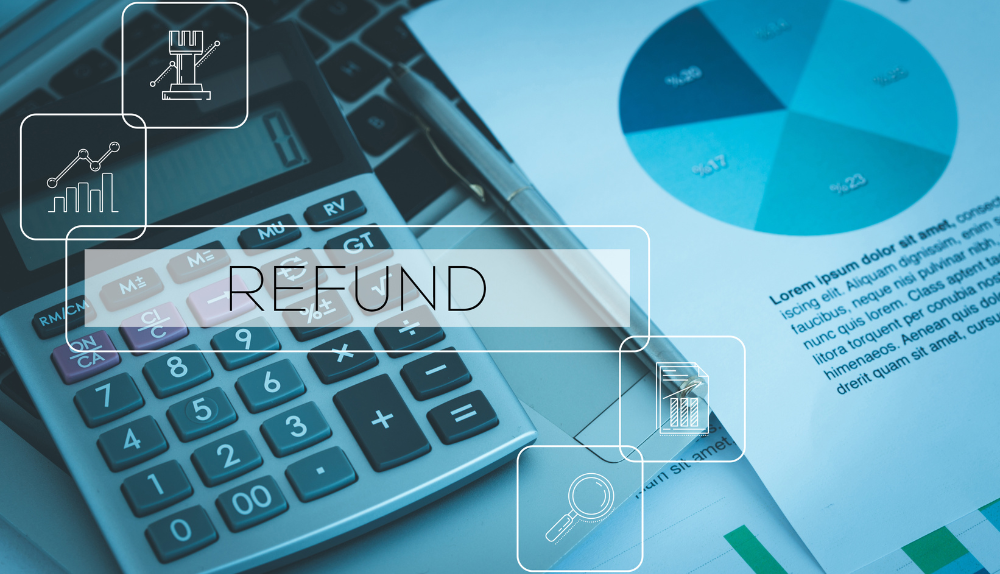The processing time for refunds issued by the IRS can vary depending on the complexity of your claim and the current volume of applications. As a general guideline, most straightforward refunds for documented losses and costs are issued within 30 to 60 days of submitting a completed application.
ERC refund process

However, the ERC review process is very thorough to ensure only legitimate claims are approved and reimbursed. Applications that require additional documentation, verification of expenses, or clarification of the refund request may take 90 days or longer to process. The ERC aims to process at least 75% of refund applications within 2 months of submission, but some delays are inevitable given the scale of requests following a major crisis event.
Applicants are encouraged to submit complete and well-documented applications to avoid prolonging the process. Carefully following the instructions, providing receipts and other records to substantiate losses, and ensuring all forms are properly signed will help speed up the review of your application. While waiting for a determination on your refund request, be sure to keep copies of all correspondence with the ERC for your records.
The ERC understands the hardship that applicants may face while waiting for refunds and works diligently to issue approved refunds as quickly and accurately as possible within the constraints of the program. With patience and by following the guidelines carefully, applicants can have confidence their fair and legitimate claims will be reimbursed in a reasonable timeframe.
ERC qualifications and required documents

To qualify for an ERC refund and ensure your application is processed efficiently, there are some basic requirements and documents you will need to submit. Only applicants who meet the following criteria are eligible to request reimbursement for losses and costs under the ERC program:
•Affected by the crisis event – Your refund request must pertain to losses, damages, or extra expenses directly resulting from the declared crisis.
•Resident or legal business owner – Refunds are issued to individuals, families, and businesses that were lawfully residing, operating, or domiciled in the designated crisis area.
•Submit application within 60 days – Refund requests must be submitted within 2 months (60 calendar days) of the crisis event announcement to be considered. Late applications will not be accepted.
•Provide proper documentation – A completed application will include receipts, invoices, bank statements, contracts, licenses, permits, and other records to substantiate your claim. Photos, police reports, insurance claims, or medical bills may also be required depending on the nature of your refund request.
•Have not received other aid – Duplicative benefits from other aid programs or insurance policies will be deducted from any ERC refund provided. You must disclose all other sources of compensation related to your losses.
•Sign under penalty of perjury – All applications and documents must be signed under penalty of perjury, certifying that the information provided is true, accurate, and complete. Fraudulent claims will not be tolerated.
Proper documentation and providing complete responses and records upfront will help speed the review and approval process. Be sure to retain copies of all documents submitted for your reference. With the right information, most applicants receive a determination on their eligibility and refund amount within a month or two.
File with the IRS: depends on them
While the ERC aims to review refund requests and notify applicants of their determination within 60 to 90 days, applicants should keep in mind that actually receiving their approved refund payment depends on the IRS as well. The ERC will contact applicants in writing to let them know whether their claim was approved and how much will be reimbursed. However, the ERC itself does not cut or mail any refund checks—they provide the IRS with information on all approved payments, which then issues the refunds to applicants.
IRS procedures can take several extra weeks or even months to process given their workload during crisis events. At busy times, refunds may be delayed for around a month after the ERC approves and communicates a payment amount to applicants. So applicants need to remain patient through this final step as the IRS works to distribute money to those impacted.
A few things applicants can do to potentially speed refund delivery include:
•Providing direct deposit info – Giving your bank account and routing number ensures the IRS deposits your refund electronically rather than mailing a physical check. The direct deposit gets money into hands fastest.
•Double-checking contact details – Make sure the ERC and IRS have your current mailing address, email, and phone number on record. Accurate contact info helps avoid delays in locating or reaching you with updates and payment information.
•Checking refund status – You can check the status of your refund on the IRS website or by calling their automated hotline for the latest details on processing and when to expect your refund.
•Contacting elected officials – If it seems an inordinate amount of time has passed with no information, applicants may want to contact their political representatives to inquire about refund status or express frustration with long wait times. Sometimes this extra push prompts the IRS to focus attention on certain cases.
With follow-up and perseverance, applicants can eventually get clarification on the status of their refund and ensure it’s processed as efficiently as possible under the constraints of the program and workload demands. But as they await refunds in applicants’ bank accounts, continued patience will also frequently be required. The ERC and IRS aim to reimburse all those eligible as reasonably fast as they are able while maintaining the integrity of the program.
The ERC Starts with Taking the Next Step Today
At the end of the day, the only way to find out how long it will take for your ERC refund application to process and payment to issue is by taking that first step and submitting your request. While guidelines suggest most refunds are completed within 2 months, there is no way to know definitively how long yours may take without submitting the required documents and starting the process. Some advice for applicants includes:
• Gather your records upfront – Have receipts, bills, bank statements, contracts, and other proof of losses and expenses ready to submit with your application. The more complete your initial application, the less likely your refund will be delayed by requests for additional information.
• Submit within 60 days – Make sure you submit a request for an ERC refund within 2 months of the crisis event announcement to ensure it will even be considered. Late submissions will not be accepted.
• Ask questions if needed – The ERC aims to make the application and process as straightforward as possible, but questions are encouraged. Submitting an incomplete or inaccurate application will only prolong the time required for review and approval. Get clarifications first.
• Check the status regularly – Once you submit your application, check on its status with the ERC regularly through their website, hotline, or other established methods. Wait times for processing mean most applicants will have to be proactive in following up on their refund. Status updates can help provide insight into approximately how long it may take.
• Appeal a decision if denied – If the ERC determines you do not qualify or approves a lower amount than you believe is fair, you have the option to file an appeal with supporting evidence. This may extend the overall refund timeline, so think it over carefully before proceeding with an appeal.
• Be patient and continue advocating – Unfortunately, there is often no way to shorten processing times or force the ERC and IRS to work faster on your specific refund. With patience, following up regularly and, for some, contacting elected officials, most applicants are ultimately able to get approved for the amount they believe they rightly deserve. Staying in this course is key.
While there is uncertainty in this process, taking it step-by-step will increase the chances your hard work to recover losses will lead to recovery. Start by submitting a complete application, follow up regularly, and continue advocating for your fair claim. Keeping a positive and patient attitude will help make a difficult process more bearable.
The ERC aims to reimburse promptly and fairly—to get them the information and details they require to do so is up to you as an applicant. With persistence, most applicants can make progress, even if the way forward feels slow.


